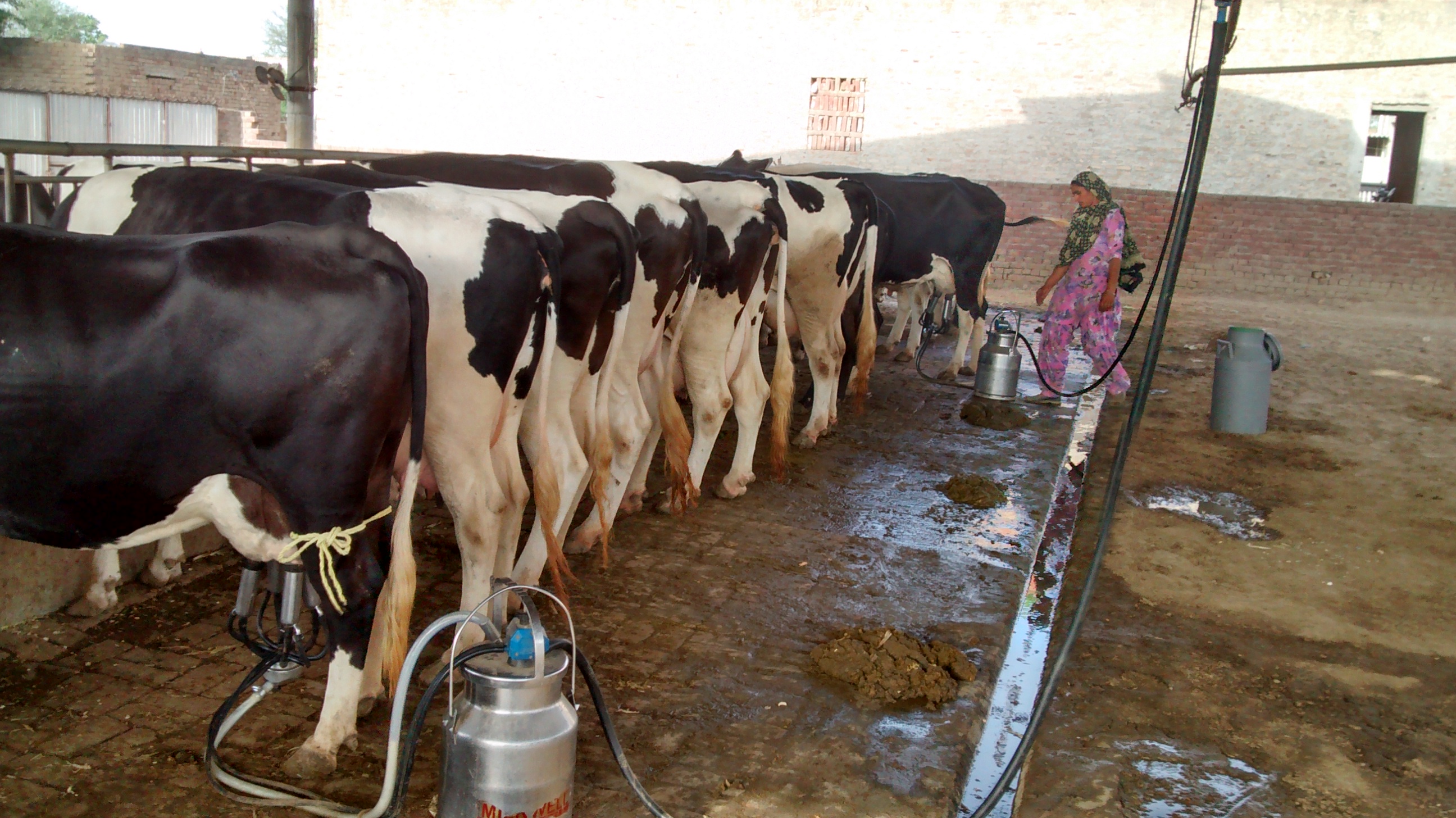
Dairy Farm in Punjab. Source: Tajuddin Khan, IFPRI
Did you know, milk contributes one-fifth to the gross value of agricultural output which is larger than the value of output of rice and wheat put together. In the past four- five decades, India’s dairy sector have seen a significant grown, despite poor access to markets and institutional credit, this progress was possible by millions of small-scale producers in this sector.
A recent IFPRI discussion paper titled “Formal versus Informal- Efficiency, Inclusiveness, and Financing of Dairy Value Chains in India” examines the efficiency, inclusiveness, and financing of dairy value chains using household-level data from Punjab state. The study finds that, on an average, a dairy household sells 88 percent of the milk it produces. About 62 percent of the dairy farmers representing 69 percent of the total sales are associated with formal sector value chains driven by cooperatives and private processors. Cooperatives however are the most preferred channel in terms of both sales and suppliers. But, smaller dairy farmers are more associated with informal value chains, while larger dairy farmers prefer selling milk to formal value chains, driven by cooperatives, multinationals, and private domestic processors. Small dairy farmers though outweigh large farmers in formal value chains numerically their share in milk sales is not large. Hence, it does not seem that formal buyers do not prefer partnership with small farmers.
Further, while exploring the impact of choice of a value chain on milk yield and farm profits the study does not find any significant difference in them across value chains. However, across farms, larger farmers have been found to realize higher profits perhaps due to their better bargaining power in obtaining price terms.
The study also addresses the issue of financing of value chains, and finds that more than half of the farmers borrow credit for dairying related activities both from formal and informal financial sources. The incidence of borrowing is higher among those who are associated with informal value chains. But, chain-based financing is limited to only one-fourth of the borrowing households. Financing by commercial banks is limited and largely to those having larger holdings of both land and animals. Smallholder farmers depend more on social networks of relatives & friends and moneylenders for their financial requirements. This implies that financing decisions of the commercial banks or other financing institutions are largely driven by creditworthiness. The findings of this study have implications. A value chain with its product market orientation can serve as collateral and financial institutions may think of using contract as collateral. Also financing through a value chain is an important means of reducing the transaction costs and lending risks associated with asymmetric information. Financial institutions in India treat credit to dairy as investment credit while farmers need funds for meeting operational costs. The study thus argues for provision of short-term credit to dairy farmers on the lines of ‘crop loan’ through innovative financial products, such as ‘dairy credit card’. This would enable farmers adopt yield-enhancing technology and inputs and also to scale up their dairy activity.



